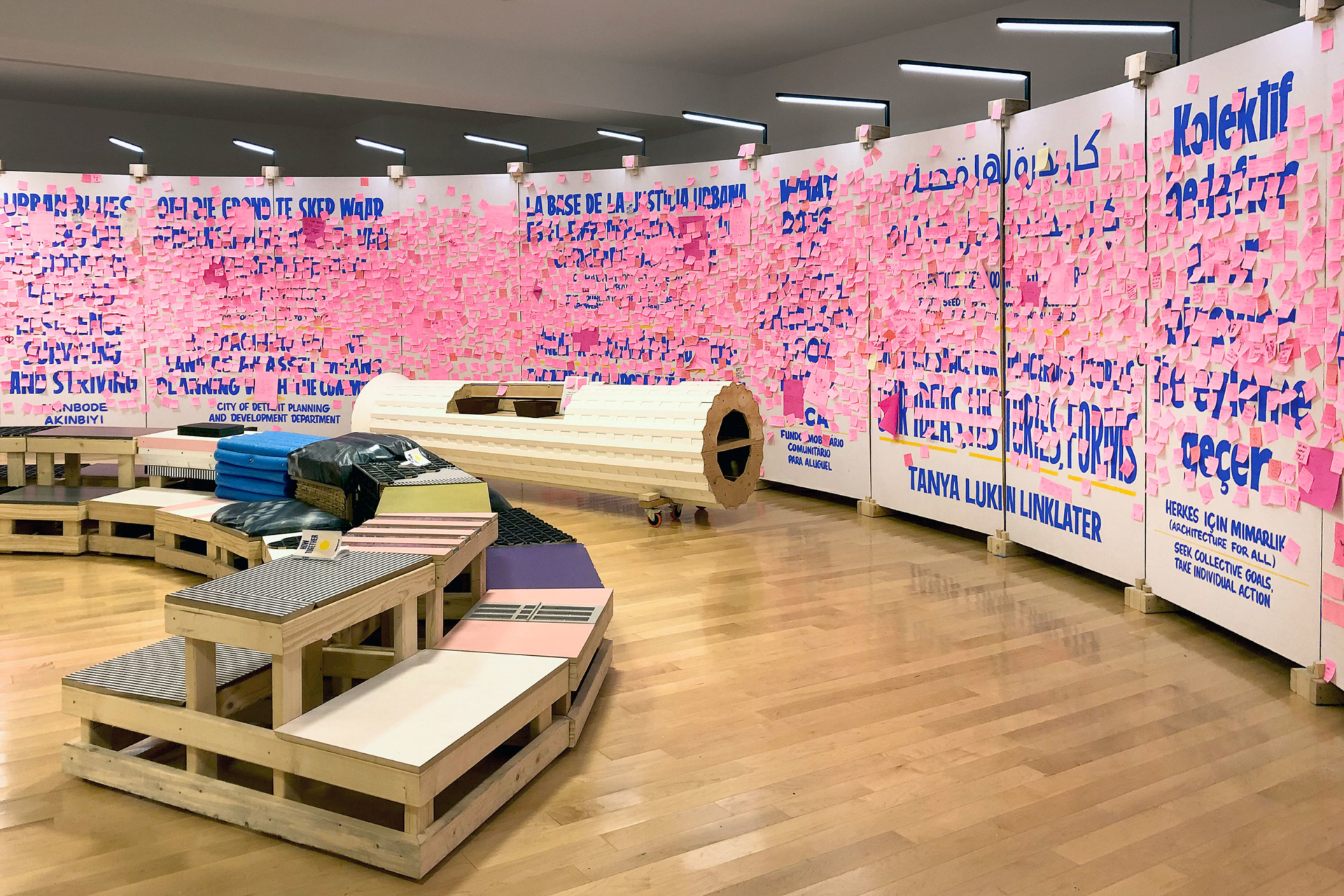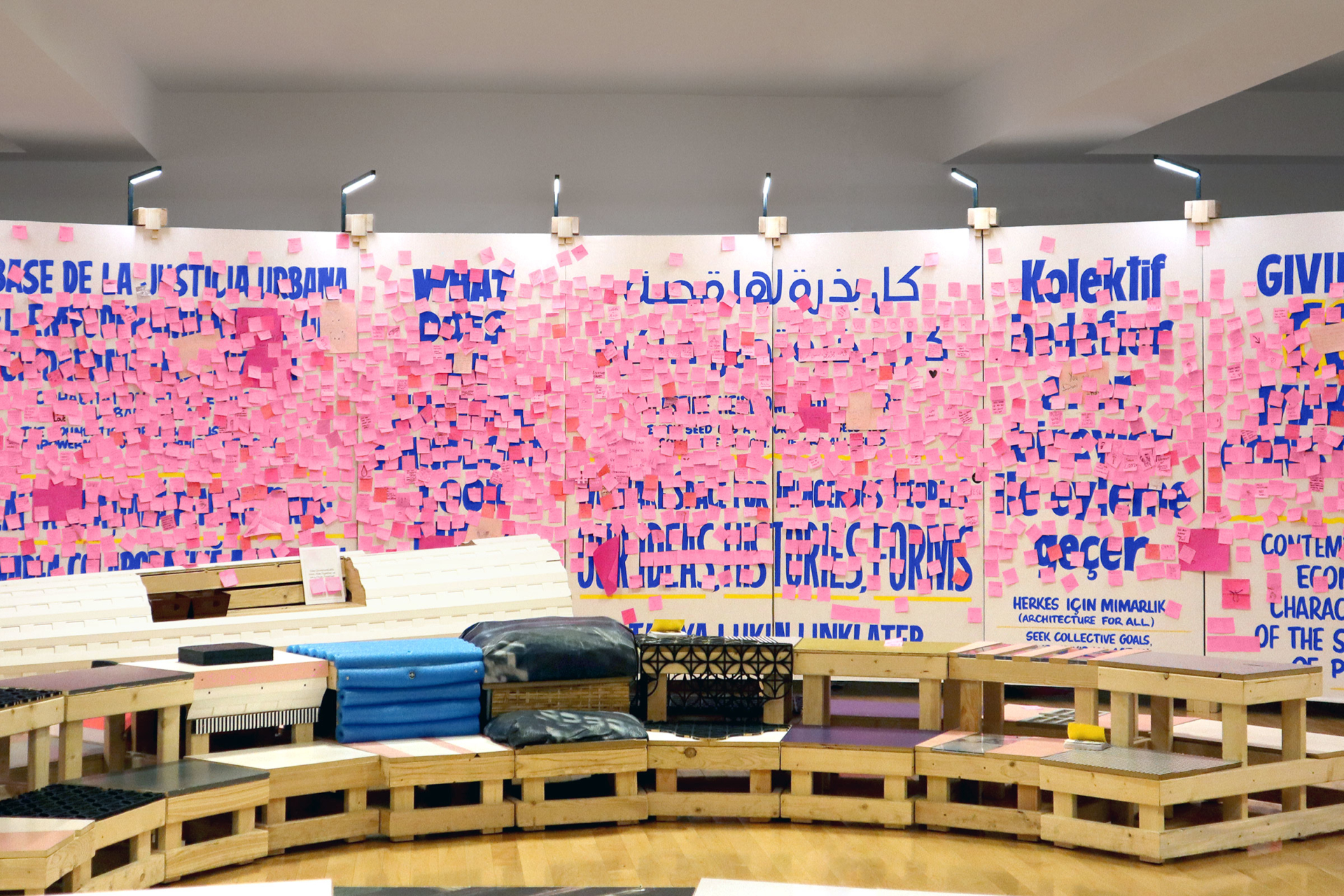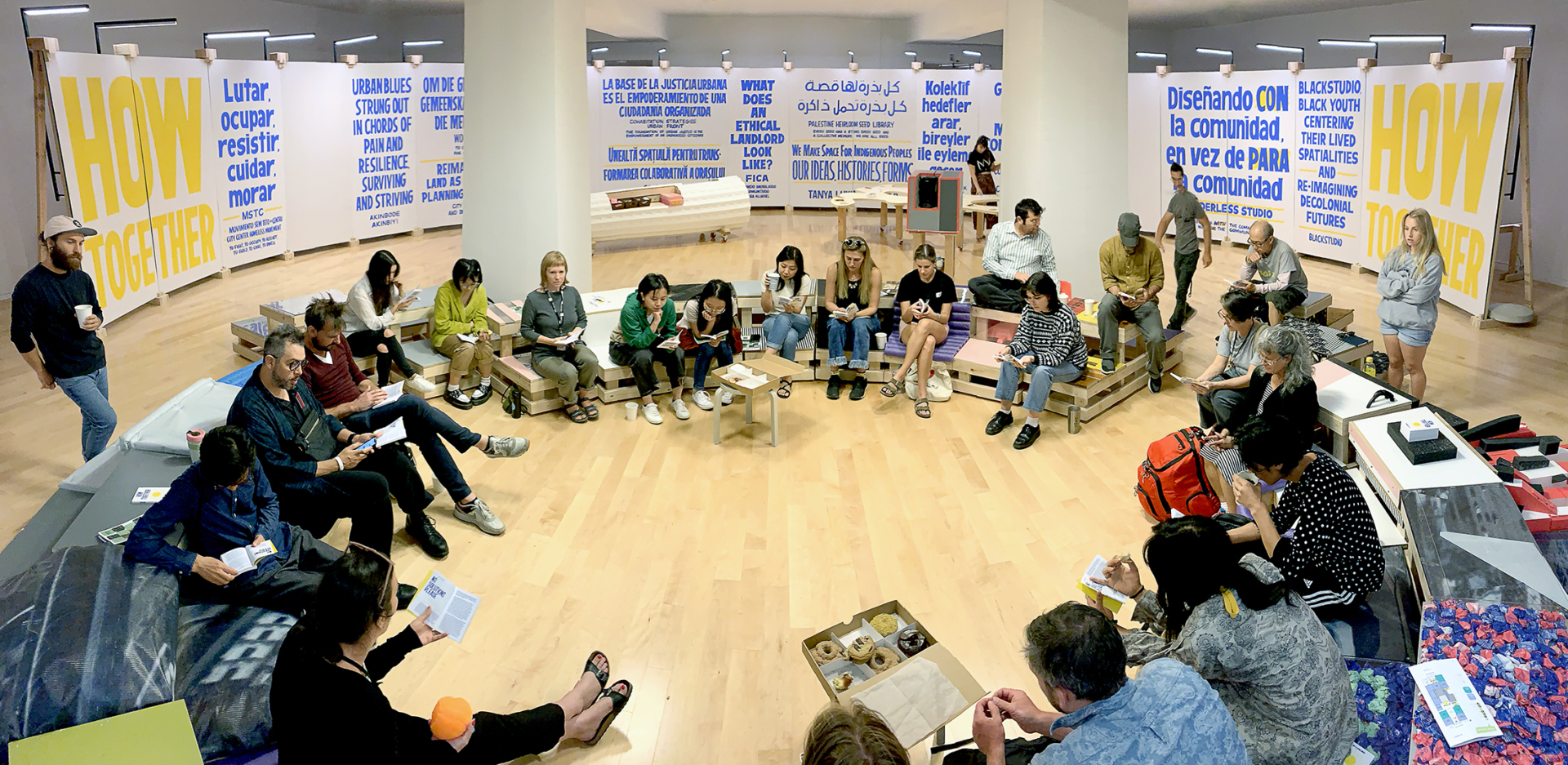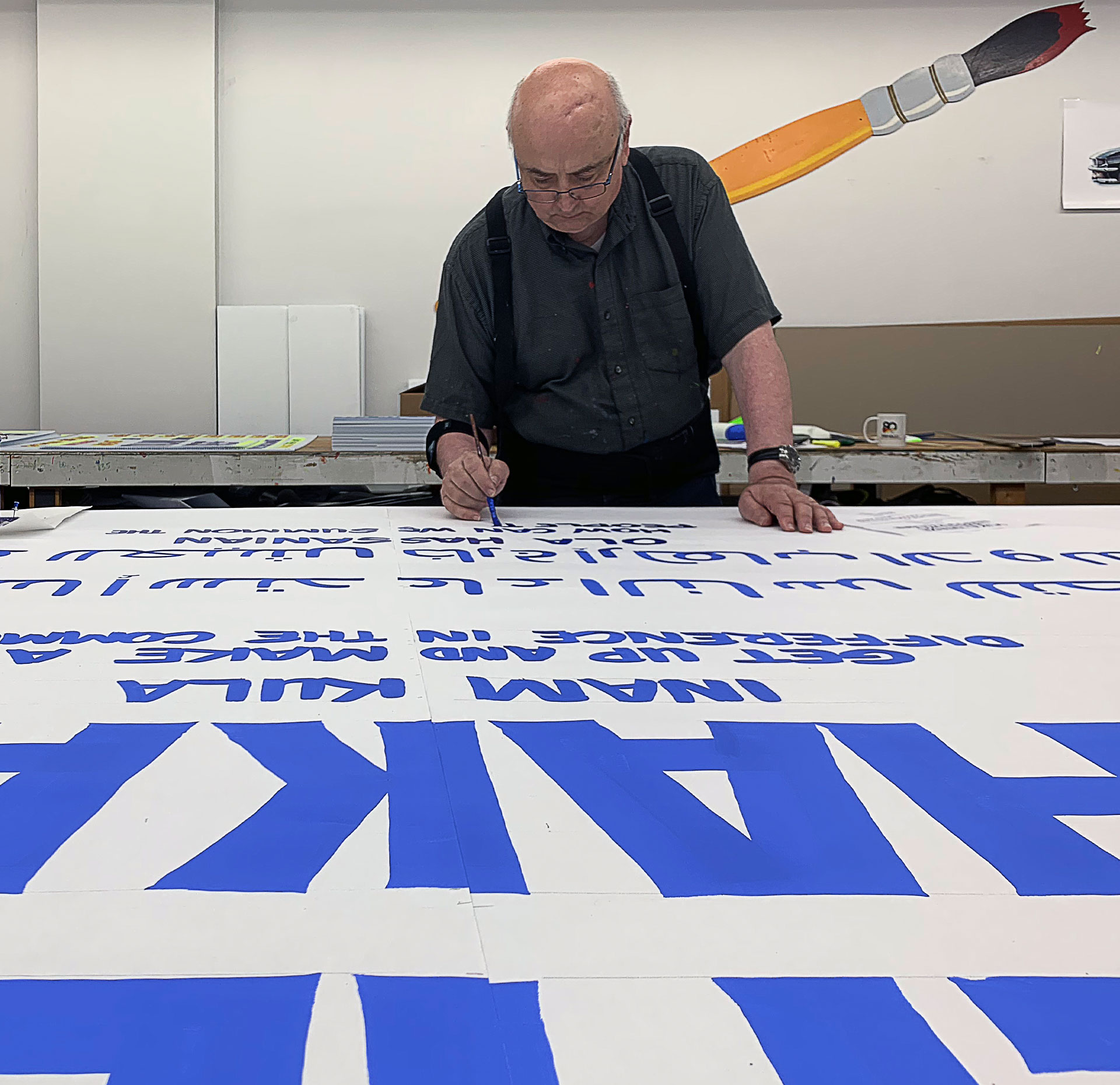How Together
A project about gathering developed for the Chicago Architecture Biennial as part of ConstructLab.
Togetherness
Under certain conditions, the gathering of individuals can lead to collaborative dynamics. What are these conditions, what are these dynamics and how do we actually gather (whether it’s around content, ideas, actions, production, observation or rules)? Through past projects and experiences ConstructLab has implemented, explored and tested multiple tactics. Several situations of togetherness are born from those experiences and are composed of people (ideas, skills) who take action (usage, formats) within a moment (duration, intensity) supported by a suitable structure (resources, space). Projects are never made up of only one of these aspects.
ConstructLab always starts a project by inhabiting a space. On site, trying to take time to develop ideas, creating a network and maintaining relationships. By being present, ConstructLab takes time to build experiences and develop as many stories as possible. Therefore, this invitation to the Chicago Architecture Biennial from afar represents a big challenge: how do you invite people to use and share a common ground if you yourselves are a guest? Can we be there without being face-to-face? How do we connect towards a productive goal? How do we transform a common ground to a convivial ground?
Common Ground
For the Chicago Architecture Biennial 2019 we put forward fragments to compose and dispose, to use independently or to combine together, all at once or one with another. Constituted of a spatial intervention: a reconfigurable agora to meet people’s needs realised through collaborative energy, ideas and contents.
The gallery is transformed in a public square which walls displays the statements proposed by all the participants within the Biennial. Additionally instruments are available for anybody to use: a table, a printing machine, a coffee machine, office supplies and a publication: “How Together, an anti-manual” gathering ConstructLab narratives in diverse situations of collaborative practices.
The space is activated by its users. Any group or person can organise or attend a gathering. To use the space, the public is invited to simply use an empty sticky note to announce an event or join a gathering that has previously been announced. Within the space anybody is invited to respond to the content on the walls. The sticky notes can be used to add comments, make new propositions or come up with alternative strategies.
Activations
Debating ideas
All participants within the Biennial were asked to contribute to the panels that surrounded the agora. All party were asked to offer a single idea or strategy using clear, specific language. It was the idea that multi-lingual texts could give rise to a degree of debate and discussion. Frieze wrote the following in their review of the Chicago Architecture Biennial:
One of these slogans is particularly vexing: ‘We Shall Keep Oil in the Ground.’ It references Territorial Agency’s Museum of Oil (2019), a research-based installation that uses satellite and remote-sensing data to analyse fracking in Texas, the Dakota Access Pipeline and Gulf of Mexico (the scene of BP’s own Deepwater Horizon spill). Could the inclusion of the work be a dig at the biennial’s main sponsor, fossil fuel giant BP? Or ConstructLab’s self-criticism for participating in a biennial compromised by its affiliation with an oil company?
Read more:
Frieze: Is the Chicago Architecture Biennial’s radical message compromised by Big Oil?
Painted signs
In search of a more intimate experience we wanted to give the mediative space a tactile feel. It should be eminent that the structure was build by human hands; the boards should be kept in place with wooden wedges, the posters should be glued by hand and every statement should have the strength of a hand painted protest sign. Thinking about the idea of togetherness we additionally wanted to make use of local knowledge and skills.
Although the trade is dying out, Chicago has a great tradition when it comes to sign painting. Not being a “walldog” (in which you paint directly on the wall) Chuck from Southwest Signs is one of the last local sign painters that works on paper. With the help of some digital means a dialogue was set up about an analogue trade. Being briefed from Europe Chuck painted every title for the publication and produced all signs for the public square.
An additional reflection of this collaboration can be found here:
Handwriting
As an additional form of activation people could reflect upon a statements or respond to ongoing activation by adding sticky notes to the wall. Over time the walls would be covered with thousands of voices. This topical reference related to the “Lennon Walls” seen in Hong Kong.
During the anti-extradition protests of 2019 “Lennon walls” started to emerged in the streets of Hong Kong. Inspired by the original protest wall in Prague, people posted thousands of sticky notes on walls expressing democratic wishes for Hong Kong.
The physical aspects of handwriting and the conscious act of sticking a note on a wall surpasses the act of sending out an impulsive message through social media. A multitude of online messages should be perceived as a sequence; an infinite scroll. Before one is able to reflect on anything the next wave of opinions has erased the forgoing (it is not for any reason that people experience social media fatigue). When being faced with a physical multitude of hand written notes one can maintain an overview; experience true individuality and oneness at the same time.
Reflections of Courtney, the caretaker of the space during its existence, can be found here:
Anti Manual
The publication is one of the fragments of Constructlab’s intervention at the Chicago Architecture Biennial 2019. Surrounding the question of how we live together, the gathered texts, conversations and essays bring together the multiple voices that constitute ConstructLab’s community. It is intended as a collection of personal experiences on how we— as a group of individuals from different backgrounds, cultures and disciplines — foster togetherness through living and working together around projects. These experiences are not examples to be followed. These experiences are not solutions. They are just stories we would have shared with you. It’s an invitation to fill the gaps and use all common grounds the way you wish. It’s not a “how to”, it’s not a manual; it’s an anti-manual. In here you will not find what to do or how to act. It is an invitation to invent and implement your own way of writing your own common stories.

Afterlife
Most of the materials used in this intervention have been used in past Chicago Architectural Biennials. Other materials are in the process of being pre-cycled: they have been rented, borrowed or bought with the intend to be returned and reused. Parts of the structure were reused by sweetwaterfoundation.













































